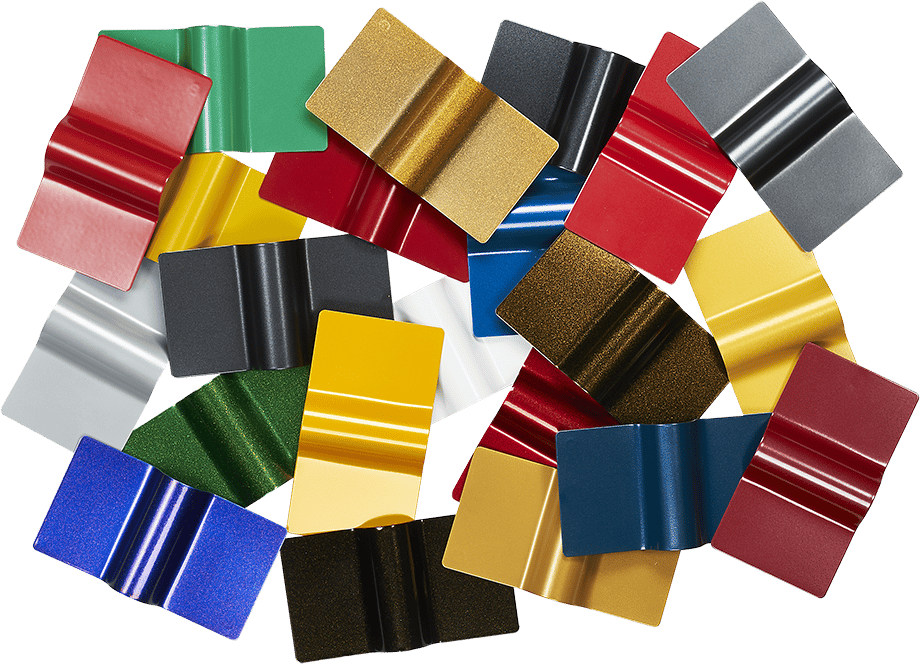Reimagining Architectural Paints
with Plant-Based Acrylic Binders

Credit: onurdongel / E+ via Getty Images

Pratibha Mahale
Credit: Courtesy of Dow
A PCI interview with Pratibha Mahale, Associate Research Scientist, Applications R&D, Dow Coating Materials
Bio-based technology continues to gain traction in the architectural coatings market as manufacturers seek sustainable solutions that don’t compromise performance. Dow Coating Materials is addressing this challenge with all-acrylic bio-based binders designed to reduce carbon footprints while meeting the rigorous demands of premium paint formulations. PCI recently spoke with Pratibha Mahale, associate research scientist, Applications R&D, at Dow, to discuss how bio-based emulsions can support both environmental goals and end-user expectations.
With a growing awareness about personal health, indoor air quality and environmental responsibility, people are increasingly looking for safer and more sustainable products, including paints. This shift in consumer awareness, combined with environmental regulations, is fueling innovations in the coatings industry. However, consumers expect sustainable products to perform equal to or better than existing products — that is, sustainability with performance. Achieving this harmonious balance between sustainability and performance has been an ongoing challenge.
A key strategy for reducing the carbon emissions of paints is to incorporate plant-derived feedstocks into polymers, making bio-based aqueous emulsions. Historically, bio-based emulsion products have been limited to solvent-based or partially acrylic chemistries and have not achieved optimal performance. As a result, their widespread adoption remains limited despite their sustainability advantages. This has led to a perception that plant-derived or bio-based products cannot be high performing.
100% acrylics with bio-based content represent a promising technology that can overcome existing perceptions and deliver both sustainability benefits and high performance. Readily available waterborne acrylic emulsions have low volatile organic compounds (VOCs) and a reduced environmental impact compared to their solvent-based predecessors. Additionally, the acrylic chemistry offers high performance and versatility, providing durability, good coverage, adhesion and quick drying times. Incorporating bio-carbon content in 100% acrylic paint compositions can reduce the carbon footprint of paints without sacrificing performance. Dow’s bio-based acrylics, integrating bio-carbon from ethically sourced plant feedstocks, are designed for the performance of premium paints. These all-acrylic bio-based binders deliver equivalent or enhanced performance compared to fossil-based binders in the targeted paints and coatings.
A primary sustainability attribute of Dow’s first-generation bio-based binders is the presence of traceable bio-carbon content. For this, a segregated process is used to transform plant feedstocks into bio-based polymers. This method, known as direct incorporation, allows the bio-carbon to be traced through C14 isotope testing in the binder and in the paints formulated with it. Our North American all-acrylic bio-based binder RHOPLEX™ RN-128 emulsion contains approximately 27% bio-carbon content, which has been verified using ASTM D6866 testing. The traceable bio-carbon serves as a crucial quantifiable metric, making the binder and paints formulated with it eligible for USDA BioPreferred certification.
In addition to bio-carbon content, other sustainability benefits include reducing carbon emissions, replacing substances of concern with safer alternatives and lowering VOC emissions of the formulated paints. We have leveraged our research on substances of concern to ensure our bio-based binders are free of intentionally added perfluoroalkyl substances (PFAS) and alkylphenol ethoxylates (APEO) without compromising performance. Furthermore, these binders have low VOCs and can be formulated into paints with ultra-low VOC level requirements below 5 g/L.
These combined sustainability attributes make this binder capable of enabling several green building credits, particularly for Leadership in Energy and Environmental Design (LEED) certification. Overall, all-acrylic bio-based binders integrate multiple sustainability aspects, including traceable bio-carbon content, a lower carbon footprint, low-VOC capabilities and a reduced environmental footprint when formulated into typical paint formulations.
In petroleum-based interior architectural paints, binders can be a major contributor to the carbon footprint. Using bio-based binders in paint formulations can reduce their carbon footprint and environmental impacts. During photosynthesis, plants use the energy from sunlight to convert carbon dioxide (CO2) into biomass. When biomass derived from these plants is utilized as feedstocks at scale, the sequestered carbon can help lower overall CO2 levels in the atmosphere. Additionally, replacing fossil feedstocks with plant-based feedstocks in binders results in a lower CO2 footprint, as the emissions associated with fossil feedstocks are reduced.
A question that often follows the claims around sustainable solutions is: How can we determine if they are effective? Specifically, how do we know if incorporating plant-derived feedstocks has reduced the carbon footprint of a final product that involves multiple supply chains and processes? The answer can be found by performing a life cycle assessment (LCA).
LCA is a scientific methodology conducted using recognized ISO standards (14040 and 14044) to measure environmental impacts of products or services from raw material sourcing through end-of-life. For architectural paints, these factors include the raw materials used in the paint formulation, water and energy consumption, transportation of materials and product longevity. We are in the process of validating our comparative cradle-to-grave LCA, certified to ISO 14040/44 standards, by an external third party for paints formulated with our bio-based binders. Preliminary results are thus far showing significant carbon emission savings without increases being observed in other environmental impacts such as acidification and eutrophication. We will be able to share these results externally after the review by a full panel of external experts has verified them.
With the growing trend toward sustainability, there has been a significant increase in consumer willingness to purchase and pay for sustainable products, with a 9% increase reported since 2021. According to a 2022 survey by Dow, 43% of the 500 contractors and DIY painters surveyed prefer products with sustainability claims. Furthermore, while resin suppliers, paint manufacturers and the technical community may use and understand the meaning of the term “bio-based,” when it comes to consumers and claims that appear on the paint can label, our survey indicated that “plant-based” language resonates the most.
While there are various claims that can attest to a product's sustainability, the USDA BioPreferred certification is the most recognizable among consumers. The U.S. Department of Agriculture oversees this certification and sets the minimum bio-carbon content required for a product to qualify. Third-party certification through C14-isotope testing is mandatory to verify the bio-carbon content in a product for this certification. This label is also found on many consumable goods such as laundry detergents, cleaning products, shampoos, baby products and other personal care products.
For architectural interior paints, the minimum bio-carbon content to be eligible for USDA BioPreferred certification is 20%. The bio-carbon content measures the percentage of carbon atoms derived from biomass relative to the total organic carbon in the paint. Dow bio-based binders produced using a direct incorporation (segregated production) approach contain approximately 27% traceable carbon, which is sufficient to qualify for USDA certification for both the binder and most architectural interior paints.
A majority of the corporate sustainability initiatives in the paints and coatings value chain focus on:
- Lowering energy and CO2 emissions from own operations, purchased raw materials and the use of products by contractors and consumers (Scope 1, 2 and 3 emissions).
- Advancing circular economy goals by introducing biomass or recycled content in the products, participating in used paint recycling (PaintCare program), using packaging with recycled content.
- Creating products with low odor, low-VOC emissions and free from intentionally added substances of concern.
The incorporation of bio-based content can be done throughout the paint supply chain to make monomers, binders, coalescents, rheology modifiers, dispersants, defoamers and even packaging (pallet wraps and paint cans) move away from dependence on petrochemical sources. For most chemical companies and paint producers, indirect Scope 3 emissions are the largest portion of their corporate greenhouse gas emissions inventory — varying between approximately 70% for chemical companies to more than 90% for paint producers. Introducing biomass content into paints can help reduce the cradle-to-gate carbon footprint and upstream Scope 3.1 emissions from purchased raw materials. Responsible sourcing of bio-based feedstocks (e.g., no deforestation to clear land for crops) must be practiced while accounting for economic and supply chain constraints around scale and costs.
